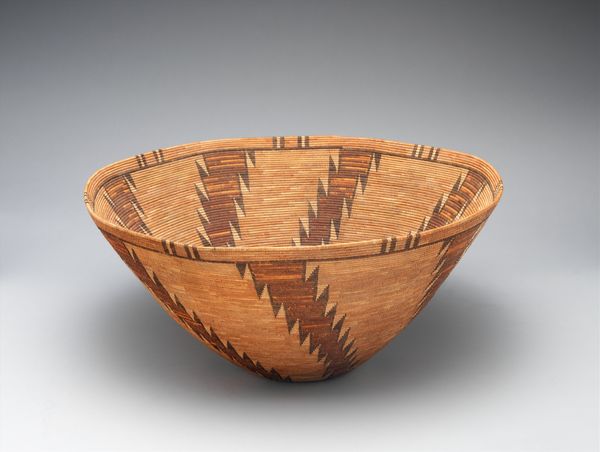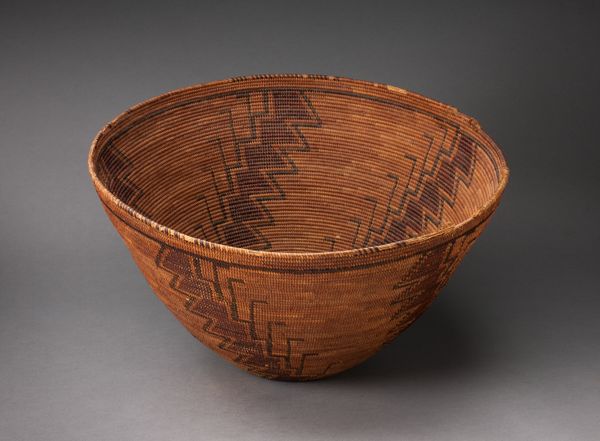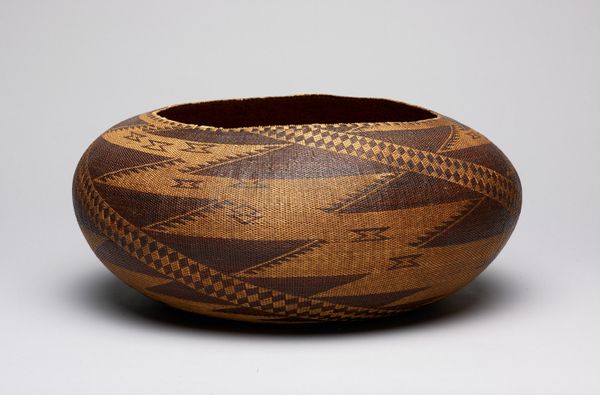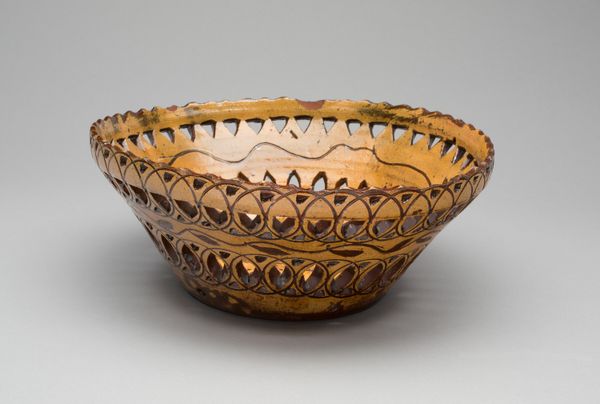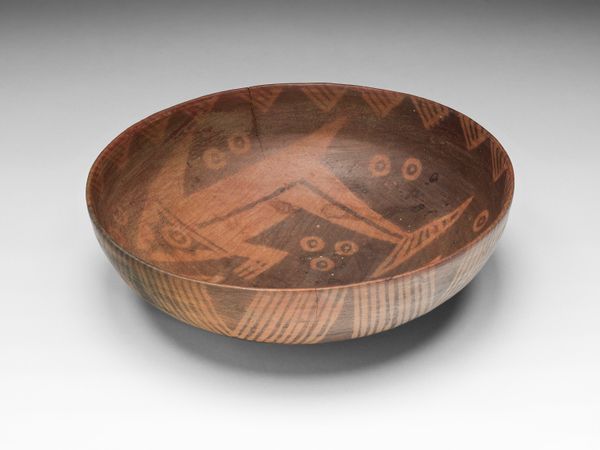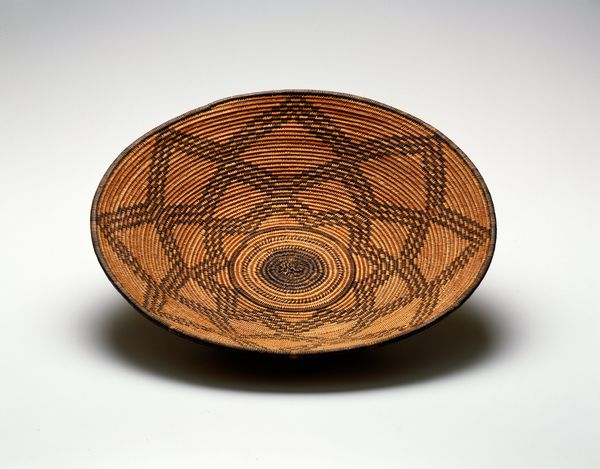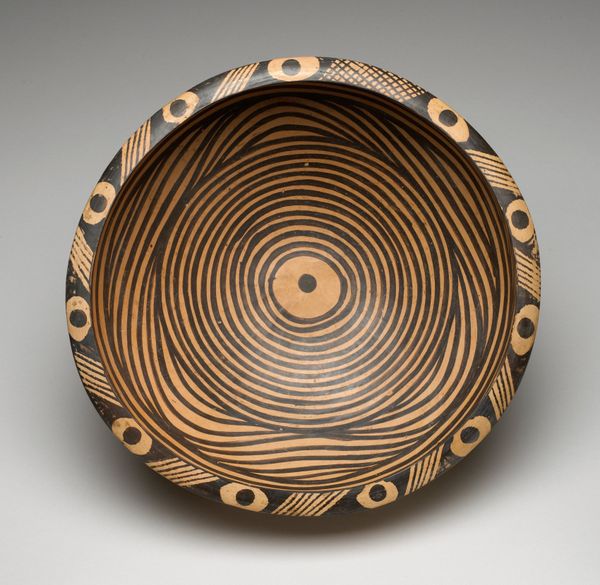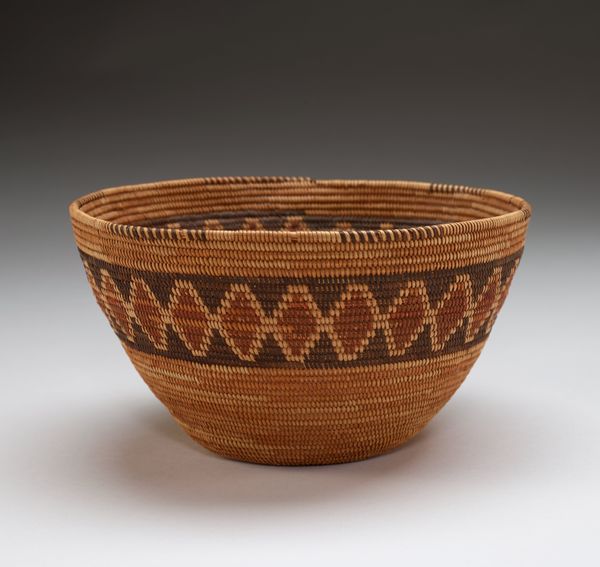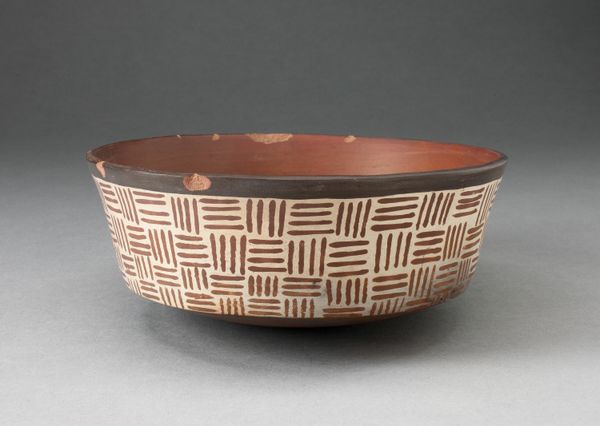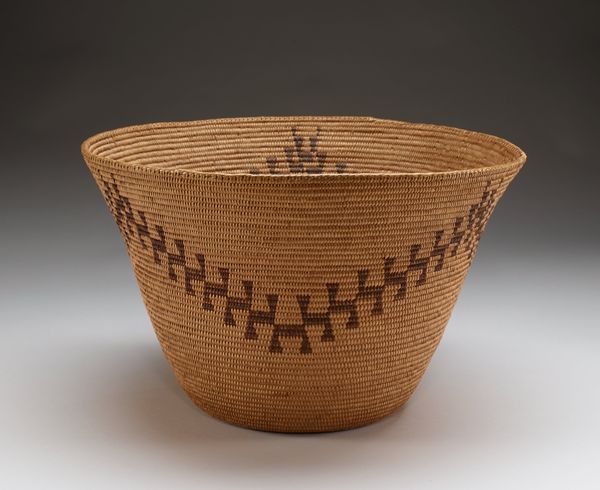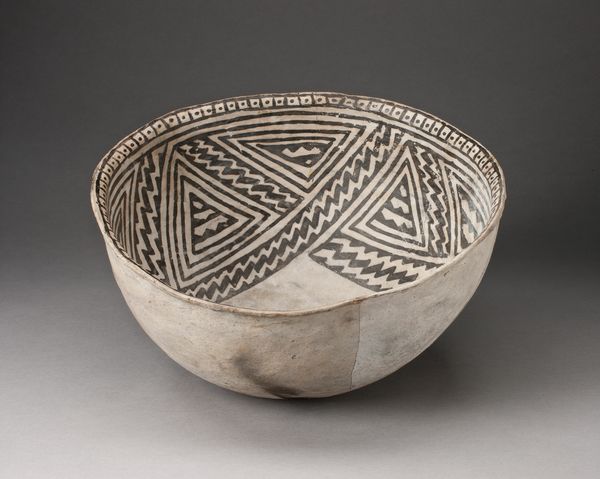
fibre-art, weaving
#
fibre-art
#
weaving
#
geometric
#
indigenous-americas
Dimensions: 29.2 × 55.9 cm (11 1/2 × 22 in.)
Copyright: Public Domain
Curator: Let’s talk about this "Food Basket," a woven piece from the Maidu people, crafted sometime between 1870 and 1890. You immediately notice its… presence, right? Editor: Absolutely! It feels grounded. It's this beautiful earthy vessel with graphic energy. You know, a kind of quiet strength. What’s it made from exactly? Curator: Primarily, it’s fiber art using weaving techniques, though we often forget that fiber is just modified plant material. Its utility, both for gathering and potentially for storage, emphasizes the relationship between people and available resources. The geometric designs integrated seem intentional. Editor: Those patterns, they feel… alive! It’s not just decoration, it's like a hidden language woven in. Does the geometry relate to, say, the local landscapes or plant life somehow? The steep walls lend drama! Curator: Well, without specific documentation, we can only speculate on the intent behind the geometric abstraction. But analyzing its creation shines a light on how indigenous people skillfully combined practical skills with artistic expression. The evenness and skill it must've required to build is humbling. Editor: It gives me the sensation that it’s simultaneously ancient and strikingly modern. You can really see how functional items can exist at the highest form of aesthetic design. Curator: Exactly! This shows us how something as simple as a food basket reflects a community's ingenuity, available materials, and how its artistic expression isn’t necessarily separate from survival itself. Editor: Looking at this "Food Basket," I keep wondering about all the hands that touched it, the stories it could tell about harvests and meals. It bridges function, beauty, labor, and material into one tangible object. Curator: It highlights the labor and intentionality behind its making, shifting how we view functional objects in the museum and raising valid discussions around indigeneity and consumerism. Editor: What began as a common container became a symbol of cultural expression and innovation. Now that's powerful stuff.
Comments
No comments
Be the first to comment and join the conversation on the ultimate creative platform.
